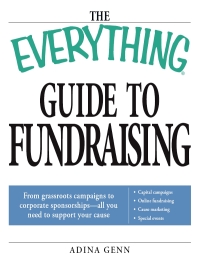Question
You are the CEO of a publicly traded company considering a new factory to build iphone covers. As you are compiling your cost and cash
You are the CEO of a publicly traded company considering a new factory to build iphone covers. As you are compiling your cost and cash flow projections for the project, you are also trying to figure out the appropriate cost of capital to use as a discount rate. In the back of your mind, you are also thinking about retirement. Heres some data available to you to figure out what to do. 1. Your company has public bonds outstanding. They were issued 2 years ago at par with an annual coupon rate of 8% (paid semi-annually). The original maturity was 10 years; they now trade at 92. Treasury rates (10 year) at issuance were 4% and are now 3%. There is $400mm in long-term debt; all of it are these publicly issued bonds. 2. Your stock currently trades at $20 per share. There are 100mm shares authorized and 15mm issued; there are 3mm of treasury shares. There is no preferred stock. The stock traded around $50 per share last year. Your company pays a dividend; it is expected to be $1.25 per share quarterly this coming year. It was $.95 per share quarterly 8 years ago. Per Google Finance, the Beta on your stock is 1.75. Investors are currently expecting 9% returns on a market basket of stocks; it appears that market returns have actually been averaging that rate for several years. 3. Your earnings per share last year were $2. Three years ago, EPS was $6 per share. 4. Your tax rate is 30%. The company reported $8mm of depreciation and amortization last year. 5. Competitors in the market have Betas averaging around 1.15 and trade at a PE multiple of 15x. EBITDA multiples for your industry are 8x. 6. Your balance sheet shows current assets of $700mm, fixed assets of $400mm, and total liabilities of $600mm. 7. The new factory project will include $50mm of capital expenditures and $10mm of installation costs on day 1. You expect working capital will change as follows: Receivables will increase by $10mm one year from now...Inventory will increase by $5mm on day 1...payables will increase by $4mm on day one. You expect equal annual after tax cash flows from the project to be $15mm per year for 9 years (assume these cash flows happen at the end of each year). At the end of the nine years, you plan to close the factory. You expect to sell it for $15mm with an assumed $5mm tax basis at that time. At closing, you will have to fund an environmental escrow that must fund an annual after-tax payment of $350,000 (for remediation costs your company must cover) starting one year after closing and lasting forever. The payment will also have to increase by 3% per year. Assume the incremental working capital is liquidated at the end of the 9 years. 8. A year from now, assume the company offers you early retirement. They give you the option of a lump sum payment of $30mm on that date or a growing annuity starting in five years from today in the amount of $600,000 annually and growing by 7.5% per year. The annuity will have 30 payments and then stop. Assume a discount rate equal to the market return on a basket of equity investments. Questions (show your work in appropriate detail that I can follow): A. What is your companys WACC? For your cost of equity, calculate both CAPM method and Gordon Growth method and then say which one you picked for WACC. B. How many different equity market capitalization calculations can you make? Show your calculations for each of them. Which seems most instructive? For this exercise, assume a discount rate of 13%. C. Should you do the new factory investment? Why? For this exercise, use a discount rate of 13%. D. What can we figure out regarding the recent performance of our company? Describe your observations in 2-3 sentences.
NOTE:ANSWER PART E
E. Do you take the lump sum or the annuity for early retirement?
Step by Step Solution
There are 3 Steps involved in it
Step: 1

Get Instant Access to Expert-Tailored Solutions
See step-by-step solutions with expert insights and AI powered tools for academic success
Step: 2

Step: 3

Ace Your Homework with AI
Get the answers you need in no time with our AI-driven, step-by-step assistance
Get Started


